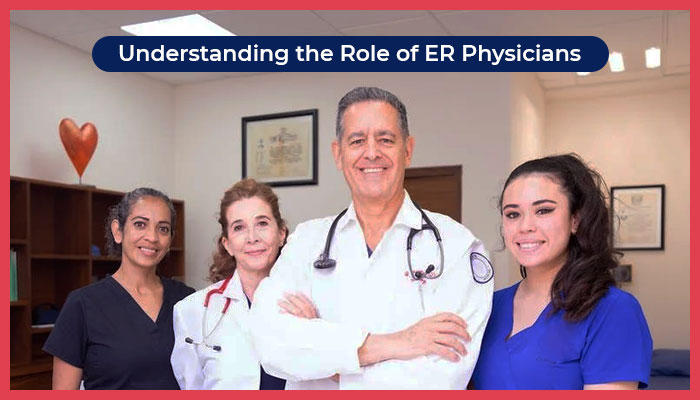Emergency Room (ER) physicians are unsung heroes in the world of healthcare. They are the first responders to critical medical situations, providing immediate care, diagnosis, and often life-saving interventions. Understanding the role of ER physicians is essential to appreciate the challenging and crucial work they do daily. In this comprehensive guide, we will explore the responsibilities, expertise, and the critical importance of ER physicians.
The Frontline of Medical Care
The First Point of Contact
ER physicians are often the first medical professionals patients encounter in emergencies. They must act quickly to assess and stabilize patients.
Versatile Expertise
ER physicians must have a broad knowledge of medicine, as they deal with a wide range of medical conditions, from heart attacks to broken bones to infectious diseases.
Handling Critical Situations
ER physicians are trained to manage life-threatening emergencies, making split-second decisions that can be the difference between life and death.
The Responsibilities of ER Physicians
Rapid Assessment
ER physicians must quickly and accurately assess a patient’s condition, often with limited information.
Stabilization
They provide immediate care to stabilize patients, which can include administering medications, performing procedures, or ordering diagnostic tests.
Diagnosis
ER physicians must diagnose the underlying medical issue and decide on the appropriate course of treatment.
Coordination
They coordinate with other medical staff, nurses, and specialists to ensure the patient receives comprehensive care.
Communication
ER physicians must effectively communicate with patients and their families, explaining complex medical situations in a way that’s easily understood.
The Importance of ER Physicians
Saving Lives
ER physicians are often the difference between life and death for patients in critical condition.
Reducing Wait Times
Their efficiency in triage and treatment helps reduce wait times for all patients in the emergency room.
Preventing Complications
Quick and accurate diagnosis and treatment can prevent complications and long-term health issues.
Providing Emotional Support
In addition to medical care, ER physicians often provide emotional support to patients and their families during stressful times.
The Training and Expertise
Medical Degree
ER physicians start with a medical degree and then complete a residency in emergency medicine, which typically lasts three to four years.
Board Certification
Many ER physicians become board-certified in emergency medicine, demonstrating their commitment to high standards of care.
Continuing Education
ER physicians must continuously update their knowledge and skills through ongoing education and training.
Conclusion
ER physicians are the unsung heroes of the medical world, providing immediate care and making life-saving decisions in the most critical situations. Understanding their role and the expertise required is crucial to appreciate their dedication to saving lives and ensuring the well-being of patients in times of crisis.
FAQs
Q: How do ER physicians handle high-stress situations?
A: ER physicians receive specialized training in managing stress and making quick, effective decisions.
Q: Are all ER physicians board-certified?
A: While board certification is common, it’s not required. However, it demonstrates a commitment to excellence in the field.
Q: Can I request to see an ER physician instead of another doctor at the hospital?
A: In an emergency, patients are typically seen by the available physician in the ER.
Q: Are ER physicians the same as paramedics or EMTs?
A: No, paramedics and EMTs provide pre-hospital care, while ER physicians work in the emergency room.
Q: What’s the most challenging part of being an ER physician?
A: The constant pressure of dealing with life and death situations is one of the most challenging aspects of the job.
Q: How do I express my gratitude to an ER physician who saved my life?
A: A simple thank you or a heartfelt note can mean a lot to an ER physician who has made a significant impact on a patient’s life.
